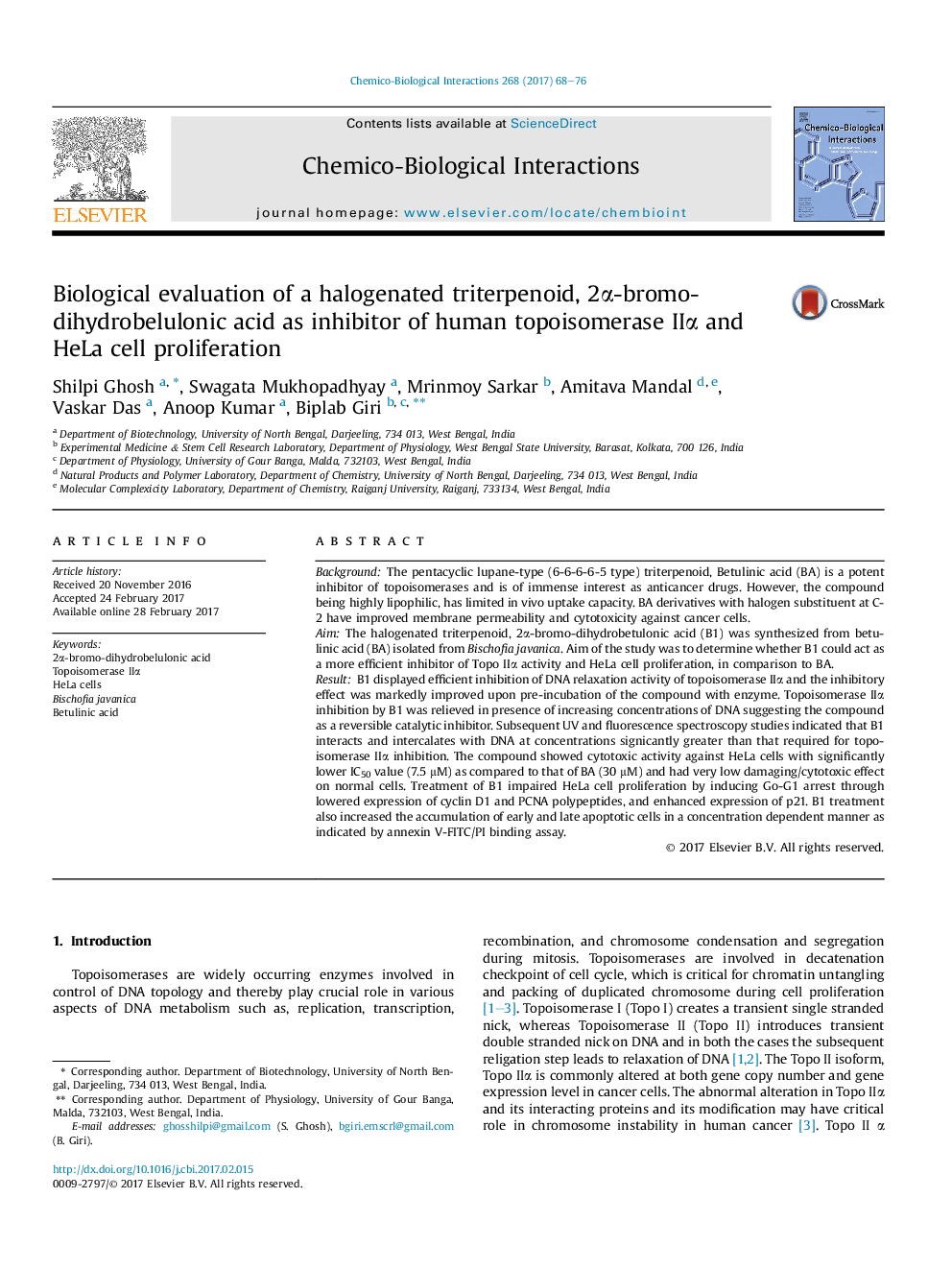| Article ID | Journal | Published Year | Pages | File Type |
|---|---|---|---|---|
| 5559599 | Chemico-Biological Interactions | 2017 | 9 Pages |
â¢Betulinic acid from B.javnica derivatized to 2α-bromo-dihydrobetulonic acid (B1).â¢B1 acted as reversible catalytic inhibitor of human DNA topoisomerase IIα.â¢B1 was cytotoxic to HeLa cells and had lesser damaging effect on normal cells.â¢IC50 of B1 for HeLa cell was significantly lower than that of betulinic acid.â¢Antiproliferative role of B1 involved induction of G0-G1 arrest and apoptosis.
BackgroundThe pentacyclic lupane-type (6-6-6-6-5 type) triterpenoid, Betulinic acid (BA) is a potent inhibitor of topoisomerases and is of immense interest as anticancer drugs. However, the compound being highly lipophilic, has limited in vivo uptake capacity. BA derivatives with halogen substituent at C-2 have improved membrane permeability and cytotoxicity against cancer cells.AimThe halogenated triterpenoid, 2α-bromo-dihydrobetulonic acid (B1) was synthesized from betulinic acid (BA) isolated from Bischofia javanica. Aim of the study was to determine whether B1 could act as a more efficient inhibitor of Topo IIα activity and HeLa cell proliferation, in comparison to BA.ResultB1 displayed efficient inhibition of DNA relaxation activity of topoisomerase IIα and the inhibitory effect was markedly improved upon pre-incubation of the compound with enzyme. Topoisomerase IIα inhibition by B1 was relieved in presence of increasing concentrations of DNA suggesting the compound as a reversible catalytic inhibitor. Subsequent UV and fluorescence spectroscopy studies indicated that B1 interacts and intercalates with DNA at concentrations signicantly greater than that required for topoisomerase IIα inhibition. The compound showed cytotoxic activity against HeLa cells with significantly lower IC50 value (7.5 μM) as compared to that of BA (30 μM) and had very low damaging/cytotoxic effect on normal cells. Treatment of B1 impaired HeLa cell proliferation by inducing Go-G1 arrest through lowered expression of cyclin D1 and PCNA polypeptides, and enhanced expression of p21. B1 treatment also increased the accumulation of early and late apoptotic cells in a concentration dependent manner as indicated by annexin V-FITC/PI binding assay.
Graphical abstractDownload high-res image (144KB)Download full-size image
